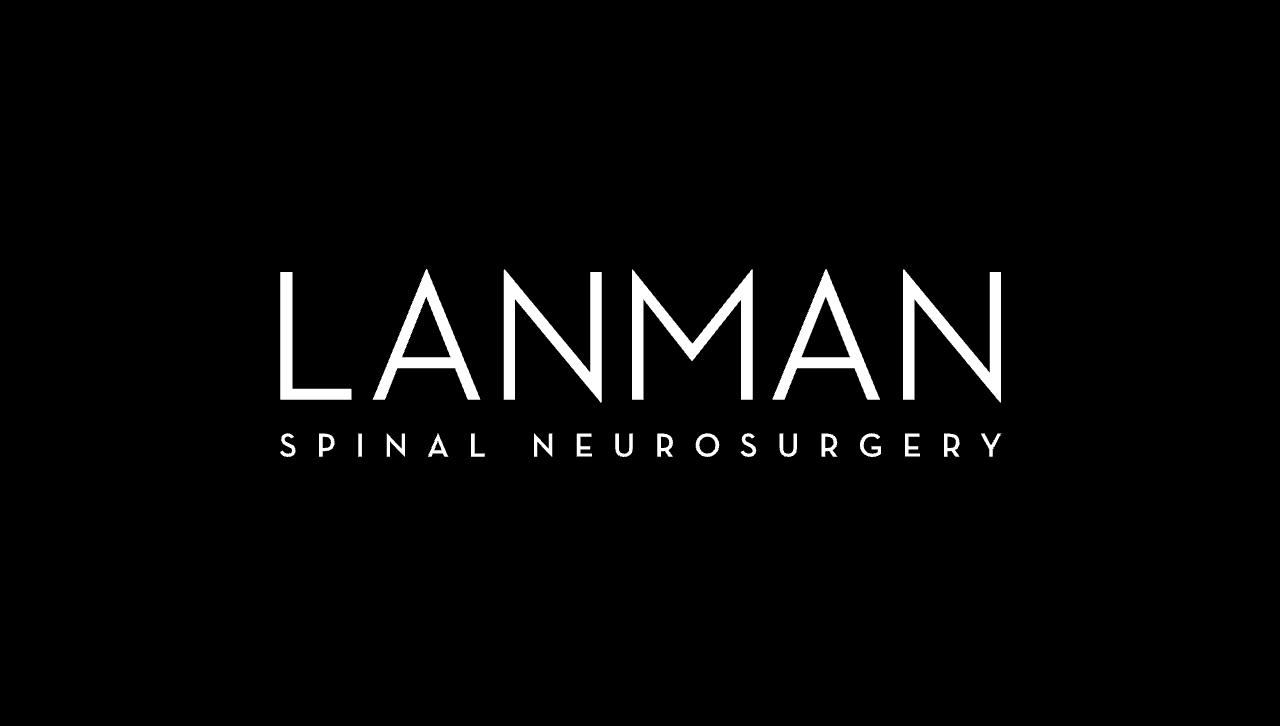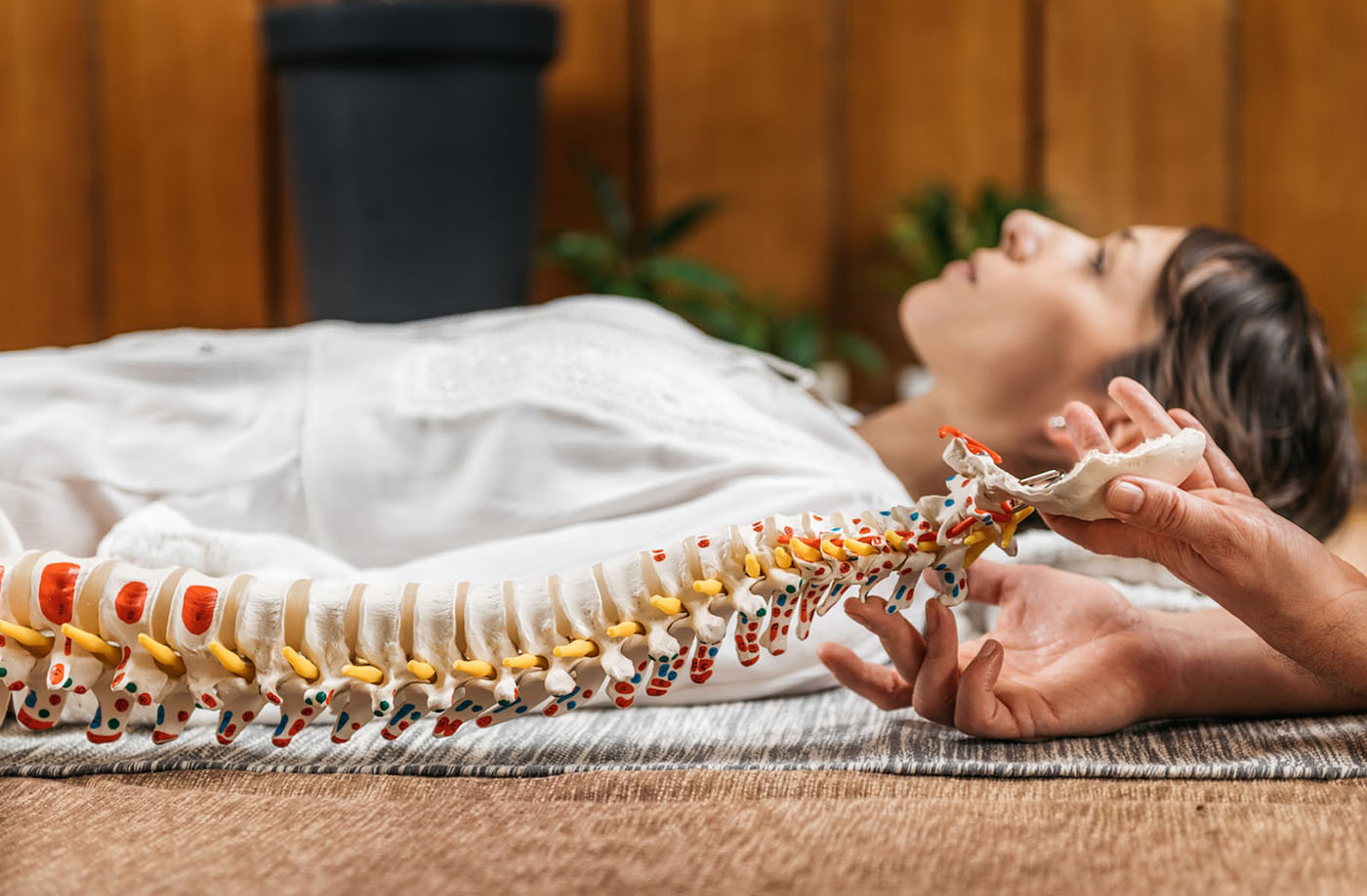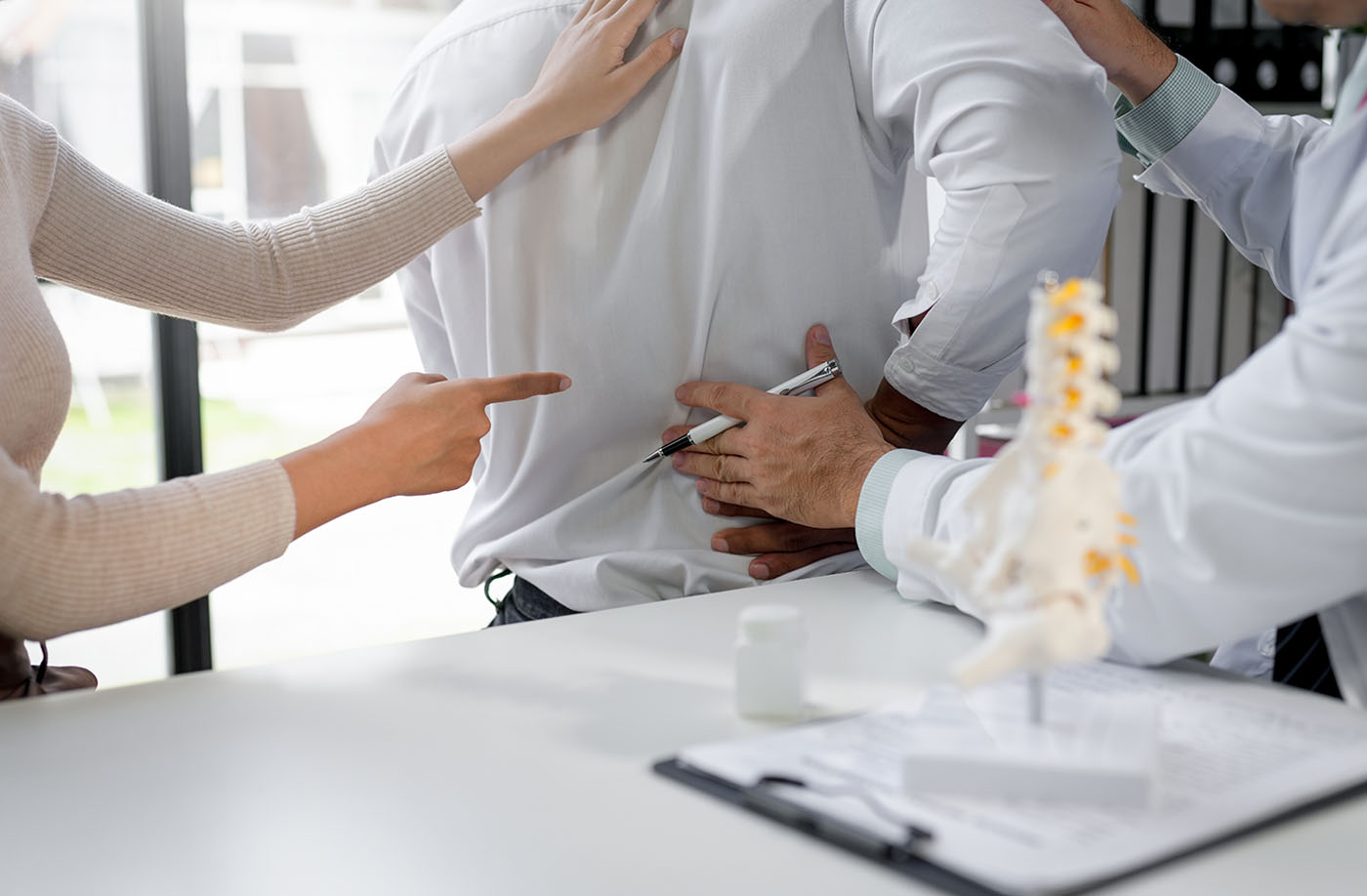Osteoporosis represents one of the most significant threats to spine health, particularly as we age. This “silent disease” weakens bones throughout the body, making them fragile and prone to fractures. Spinal compression fractures from osteoporosis occur more than a million times per year. They often occur without warning during everyday activities like bending, lifting, or even coughing. The good news is that osteoporosis-related spine fractures are largely preventable through proactive lifestyle choices. By taking control of your bone health today, you can significantly reduce your risk of experiencing the severe back pain, loss of height, and mobility limitations that often accompany spinal fractures from osteoporosis.
Dr. Todd H. Lanman is your partner in achieving optimal spine health. He has over three decades of specialized expertise in spine care and osteoporosis management. Through his leadership at the Advanced Disc Replacement Spinal Restoration Center, Dr. Lanman has transformed how we approach spinal health, developing innovative treatment strategies that prioritize both healing and prevention. What sets Dr. Lanman apart is his personal understanding of spine challenges—he has experienced eleven spine surgeries himself. This combination of world-class surgical skill and personal insight drives his unwavering commitment to helping patients not just recover, but thrive with strong, healthy spines for life.
What is Osteoporosis?
Osteoporosis is a disease that gradually weakens bones, making them more fragile and prone to breaking. This condition develops when your body loses too much bone mass. There is a loss of bone mineral density and changes in the internal architecture of the bone tissue. Because osteoporosis usually progresses without any obvious symptoms, it is often called a “silent” disease. Indeed, many people do not realize they have osteoporosis until they experience a fracture.
The spine is especially vulnerable to the effects of osteoporosis. The vertebrae (spinal bones) can become so thin and brittle that even simple movements like bending, lifting, or coughing may cause small cracks or compression fractures. Compression fractures may cause acute or chronic back pain, loss of height, and changes in posture. Over time, multiple spinal fractures can cause significant disability and impact your ability to stay active and independent. Preventing osteoporosis and protecting your spine is crucial for maintaining a healthy, pain-free lifestyle as you age.
Understanding Spine Fractures
The most common type of fracture that occurs in osteoporosis of the spine is a compression fracture. This happens when the bones in your spine (called vertebrae) become so weak that they crack or collapse. Simple activities like bending over, lifting something light, or even coughing can cause these fractures. People with osteoporosis are at higher risk of compression fractures because their bones have become thin and brittle over time. Usually, the front part of the spine bone collapses first, which creates a wedge shape. When this happens to several bones, it can cause your back to curve forward, giving you a hunched appearance.
Compression fractures can negatively affect your daily life. Right after a fracture happens, you may feel sudden, sharp pain in your back. This pain often gets worse when you move around and may feel better when you rest. If you have several fractures over time, you might develop ongoing pain, notice your spine curving more, and even become measurably shorter. A markedly curved spine can make simple tasks harder to do. It can also squeeze your lungs and stomach, making it difficult to breathe deeply or eat normal-sized meals. When fractures are not treated properly, they can make you less independent and lower your quality of life. That is why it is so important to prevent osteoporosis and get help quickly if you do have a spine fracture.
Risk Factors for Osteoporosis and Spine Fractures
Unmodifiable Risk Factors:
Some risk factors for osteoporosis and spine fractures are beyond your control. Age is a major factor—your bones naturally become thinner and weaker as you get older, especially after age 65. Gender also plays a big role; women are at higher risk than men because of the drop in estrogen (a hormone important for bone health) that happens after menopause. Family history is another key risk factor. If your parents or close relatives have had osteoporosis or broken bones, you may be more likely to develop osteoporosis yourself. Genetics can influence your peak bone mass and how quickly you lose bone as you age, making some people more prone to osteoporosis and spine fractures even if they live a healthy lifestyle.
Modifiable Risk Factors:
Fortunately, there are several risk factors you can change to help protect your bones. Not getting enough calcium and vitamin D in your diet can weaken your bones over time. Thus, it is important to include foods in your diet that are rich in these nutrients (or take supplements if needed). A sedentary lifestyle—spending too much time sitting and not enough time moving—also increases your risk. Bones need regular weight-bearing exercise to stay strong. Smoking and heavy alcohol use are harmful to bone health; both can interfere with the body’s ability to build and maintain strong bones, raising your risk for osteoporosis and fractures. By making healthy choices you can lower your risk for osteoporosis and spine fractures.
Recognizing the Symptoms
Immediate Symptoms of a Spinal Fracture:
If you experience a spinal fracture due to osteoporosis, the most common immediate symptom is sudden, severe back pain. This pain often comes on quickly, sometimes after a minor fall, lifting something, or even just twisting your body. The pain usually gets worse when you move, stand, or walk. It may feel a little better when you lie down and rest.
Long-Term Symptoms of Osteoporosis:
Osteoporosis can also cause symptoms that develop over time. One common sign is a gradual loss of height, which happens as the bones in your spine become compressed and collapse. You might also notice changes in your posture, such as developing a stooped or hunched back (i.e., kyphosis). As osteoporosis progresses, you may also find that your spine becomes less flexible, making it harder to bend or twist your back. These long-term symptoms can affect your daily activities and overall quality of life, so it is important to pay attention to these changes and talk to your doctor if you notice them.
Prevention Strategies
Nutrition for Bone Health:
Eating a diet rich in calcium is one of the best ways to keep your bones strong. Foods like dairy products (milk, yogurt, cheese), green leafy vegetables (such as broccoli and kale), canned fish with edible bones (like sardines and salmon), almonds, and calcium-fortified foods are excellent sources of calcium. Most experts recommend getting calcium from food rather than supplements, as dietary calcium is absorbed better and is less likely to cause side effects. Without enough vitamin D, your body can only absorb a small fraction of the calcium you eat. You can get vitamin D from sunlight, certain foods (such as fatty fish and fortified milk), or supplements if needed. Together, calcium and vitamin D work as a team to build and maintain strong bones throughout your life.
Weight-Bearing Exercise:
Exercise is another key part of osteoporosis and spine fracture prevention. Weight-bearing exercises, such as walking, hiking, dancing, stair climbing, and jogging, help your bones stay strong by making them work against gravity. Muscle-strengthening activities, like lifting weights or using resistance bands, also support bone health and improve balance. For best results, aim for at least 30 minutes of weight-bearing activity most days of the week, along with muscle-strengthening exercises two to three times per week. If you have osteoporosis or other health concerns, start with low-impact activities and gradually build up intensity with guidance from your healthcare provider. Regular exercise not only increases bone density but also helps prevent falls by improving your strength and balance.
Lifestyle Modifications:
Making healthy lifestyle choices can further reduce your risk of osteoporosis and spine fractures. Quitting smoking is one of the most important steps, as smoking lowers bone density and slows bone healing. Fortunately, the detrimental effects of smoking on bones can be reversed after you stop smoking. Limiting alcohol intake is also key; heavy alcohol use increases your risk for weak bones and fractures.
Preventing falls is another crucial part of fracture prevention, especially as you get older. Simple strategies include keeping your home well-lit, removing tripping hazards like loose rugs, wearing sturdy shoes, and using assistive devices if needed. Regular balance and strength exercises, such as tai chi or chair squats, can also help you stay steady on your feet and reduce the risk of falls.
By combining good nutrition, regular exercise, and smart lifestyle choices, you can protect your spine and maintain your independence for years to come.
Diagnostic Evaluation
Diagnosing osteoporosis begins with a comprehensive evaluation of your bone health. The process typically starts with a discussion of your medical history, including any previous fractures, family history of osteoporosis, and lifestyle factors like diet, exercise habits, or smoking. Your doctor may perform a physical exam to check for signs such as loss of height, changes in posture, or reduced mobility.
The cornerstone of diagnosis is a bone density scan called dual-energy x-ray absorptiometry (DXA/DEXA; often pronounced as “dex-ah”). This quick, painless test uses low-dose x-rays to measure bone mineral density (BMD) at critical areas like the hip and spine. Results are given as a T-score, which compares your bone density to that of a healthy young adult:
- Normal: T-score of -1 or higher
- Osteopenia (low bone mass): T-score between -1.1 and -2.4
- Osteoporosis: T-score of -2.5 or lower
A Z-score may also be calculated to compare your bone density to others your age.
For adults over 50, DXA is recommended for women aged 50+ and men aged 60+, or earlier for those with risk factors like fractures from minor injuries, long-term steroid use, or conditions affecting bone health. This test should be done every two years.
In some cases, doctors use the FRAX® tool—a fracture risk assessment that combines BMD results with factors like age, gender, and family history—to predict your 10-year risk of major fractures. Blood or urine tests might be ordered to rule out other causes of bone loss, such as vitamin D deficiency or thyroid issues. Early detection through these methods allows for timely intervention to strengthen bones and prevent fractures.
Treatment Options
Medications for Osteoporosis:
There are several effective medications available to help treat osteoporosis and reduce the risk of fractures. The most commonly prescribed drugs are called bisphosphonates, which include alendronate (Fosamax), risedronate (Actonel), ibandronate (Boniva), and zoledronic acid (Reclast). These medications work by slowing down the breakdown of bone, helping to maintain or increase bone density and lower the chance of fractures. Other options include denosumab (Prolia), a medication that targets the cells responsible for bone loss, and hormone therapies such as estrogen or raloxifene (Evista), which can help maintain bone strength, especially in postmenopausal women.
For people with very low bone density or those who have already had fractures, anabolic medications like teriparatide (Forteo), abaloparatide (Tymlos), and romosozumab (Evenity) can help build new bone. Your healthcare provider will consider your medical history, risk factors, and preferences to determine the most appropriate medication for you. It’s important to continue a balanced diet rich in calcium and vitamin D, exercise regularly, avoid smoking, and limit alcohol while taking these medications.
Vertebral Fracture Management:
If you experience a spinal (vertebral) fracture due to osteoporosis, treatment usually starts with conservative (non-surgical) methods. This often includes short-term bed rest, pain medications such as nonsteroidal anti-inflammatory drugs (NSAIDs) or, if needed, stronger pain relievers. Conservative treatment sometimes means wearing a back brace to support the spine while it heals. Physical therapy and gentle exercise are encouraged to maintain mobility and strength as pain improves. For most people, these fractures heal over several weeks to months.
In cases where pain is severe or the fracture causes significant loss of height or nerve problems, procedures such as vertebroplasty or kyphoplasty may be considered. These minimally invasive treatments involve injecting bone cement into the fractured vertebra to stabilize it and reduce pain. Surgery is not usually needed, but may be recommended for people with unstable fractures or ongoing nerve problems.
Dr. Lanman’s Approach to Osteoporosis Care
Dr. Lanman’s approach to osteoporosis care is rooted in a multidisciplinary philosophy that brings together expertise from various fields to provide the most comprehensive support for his patients. At his Advanced Disc Replacement Spinal Restoration Center, Dr. Lanman collaborates with a team that includes not only spinal surgeons but also specialists in bone health, physical therapy, nutrition, and aging management. This team-based approach ensures that every aspect of a patient’s health—ranging from bone strength and spinal function to overall wellness and lifestyle—is carefully considered in the treatment process.
Dr. Lanman creates a treatment plan that is designed just for you and your specific needs. He looks at many things including your age, hormone levels, how active you are, what you eat, and your medical history. This helps him create a plan that will keep your bones and spine healthy for years to come. Dr. Lanman also believes it is important for you to understand your condition and know what you can do to help yourself. He takes time to teach you about osteoporosis and how to protect your bones from fractures. He stays with you for the long term, checking on your progress, helping you make healthy changes to your lifestyle, and keeping you up to date on new treatments that might help you stay active and independent as you get older.
FAQs: Osteoporosis and Spinal Health
How is osteoporosis diagnosed?
Osteoporosis is diagnosed by measuring bone mineral density using a DEXA scan. A T-score of –2.5 or lower confirms the diagnosis.
Can osteoporosis be reversed?
Osteoporosis cannot be fully reversed, but treatment can strengthen bones, reduce fracture risk, and slow or stop bone loss.
What are the best exercises for osteoporosis?
Weight-bearing, resistance, and balance exercises are the best exercises for osteoporosis. Walking, light strength training, and tai chi help improve bone strength and reduce fall risk.
When should I be concerned about a spinal fracture?
You should be concerned about a spinal fracture if you experience sudden back pain, loss of height, stooped posture, or difficulty standing or walking after minor trauma, especially if you have osteoporosis.
Contact Us Today
Don’t let osteoporosis compromise your spinal health. Contact Dr. Todd Lanman today to schedule a consultation and learn more about our comprehensive approach to osteoporosis management and spine fracture prevention. Our expert team is here to help you maintain a strong and healthy spine for years to come.








